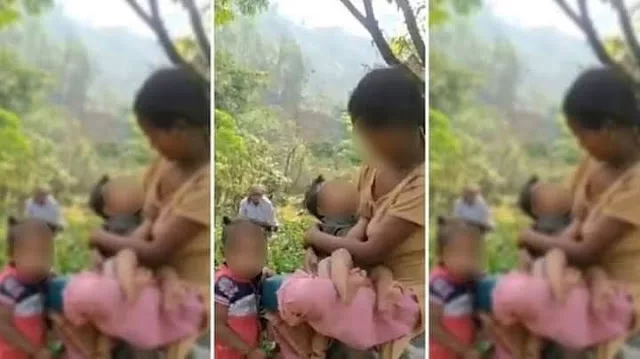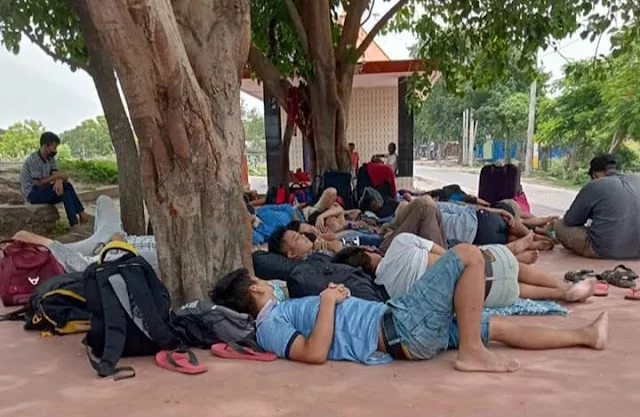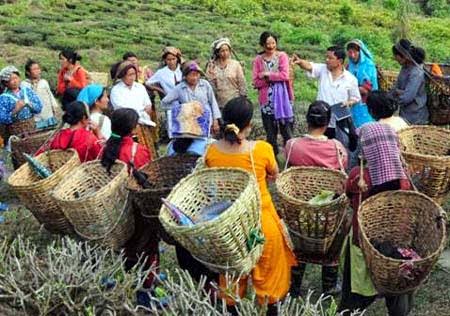Fortunately for the Gorkha population residing in Manipur for years, the return of the Protection of Manipur People Bill, 2015, recently, by the President of India, is a huge relief. This Bill along with the other two Bills, namely Manipur Land Reforms and Land Revenue (7th Amendment) Bill, 2015 and the Manipur Shops and Establishment (2nd Amendment) Bill, 2015 would have had a very adverse impact on the life world of the Gorkha, to the extent that eviction from the state could have become a norm. Of the Bills, the most harmful for the Gorkha inhabitants would be the Manipur Protection of Peoples Bill, 2015. The Bill, if passed and enacted as law, can declare any individual as non Manipuri if (s)he is not enumerated in all three registers 1. The National Register of Citizens, 1951, 2. The Census Report of 1951 and 3. The Village Directory of 1951. Therefore, what the Bill is trying to do is to make it difficult for the migrants to prove their provenance in Manipur. If enacted, this Bill can create another Bhutan-like situation for the Gorkha populace in Manipur.
 |
| Protection of Manipur People Bill, 2015 |
The crisis can be viewed from the migration and economic resources mobilisation paradigm. Nepalis migrated to different parts of India prior to its independence. In the course of their movement, Gorkha also entered the fertile land the North East and Manipur. The Gorkha have fought wars both for the British as well as against them in the North East . Some scholars push back the history of the Gorkhas in Manipur to the beginning of the 16th Century
(http://www.veergorkha.com/2011/12/gorkha-history-of-northeast-india.html). The main cause for migration is mostly related with the economic reasons but socio-political, cultural, environmental and geographical factors have also resulted in migration.
There can be host of reasons which motivates an individual to migrate but it also provides a platform to forge new forms of social and cultural relations and identity among the indigenous population as well as the immigrants arriving in the receiving society because migration often brings sudden and unanticipated contact of two or more very unfamiliar cultural systems, the consequence of which can be felt at both the intra group and inter group level. It can result into an enhanced collective consciousness and solidarity among those who migrate, based on kinship, community and ethnicity as well as by class. Symbols of ethnicity like religion, language, indicates to the migrants their origin. Such markers of ethnicity establishes the who ‘we’ and ‘they’ are and further helps to protect themselves from the hostilities and antagonism of the receiving society, even if these migrants are not aware of sharing these markers prior to migration. The migrants further develop their own and separate institutions and organisation for cohesion and solidarity amongst them in response to the discriminatory practices and treatment they perceive and experience at the hands of the receiving community (Richmond, 1988). Therefore migration is crucial for the inter-ethnic relations in a multi-ethnic society of the developing and modernising world as the protection of the space and the economic opportunities that exist within it are central objectives of a local population, while the expansion of opportunities are to the migrants (Weiner, 1978). This may results in conflict between the recipient and the migrating communities. Therefore the struggle to monopolise the resource is the cause for the conflict between these two groups. ‘Economic exchange brings people into contact; it does not bring them into agreement. Historically it has often produced a deeper awareness of the differences between peoples and stimulated mutual fears’ (Huntington 1996; 218).
What is happening in Manipur and the introduction of this Bill can be examined from this paradigm. When the region was underdeveloped and large holding of land was unutilised the natives of these places did not have any issue with the Gorkha population coming into the area as they were industrious and with their assiduousness contributed towards the development of the area. They started farming and cattle rearing and even fought wars for the Manipuri king and importantly established institutions which would safeguard their identity. The resources in the region was sustainable for the population and therefore there was no perceived threat from the ‘others’ to the receiving community ad assimilation took place. However, post independence with the development among human resources and the growth in population, competition for resources became severe and a perceptible fear gradually started taking roots among some of the Manipuris that the migrants would appropriate all their resources. Symbolic as well as concrete efforts were made to diminish the legitimacy of the Gorkha community as being part of the Manipuri society which reflected the antagonistic relations between the two groups. A letter to the editor in Sangai Express puts this fear in perspective
“The estimated migrant population in Manipur is around 7 lakhs which constitutes a-fourth of the population. If this trend is not stopped the indigenous/native population of Manipur would be reduced to a minority in another 2 or 3 decades like in the case of Sikkim and Tripura. But one thing, those who came before 1951 have no problem; they become Manipuris.
Would any society or state in India or any country in the world ever accept it? This is the grim reality in Manipur today and people are fighting for their survival.”
(http://www.thesangaiexpress.com/no-malice-no-bias-only-truth/)
Further Sapamcha Jadumani, president of Federation of Regional Indigenous Societies, some years ago said,
“According to the 2001 census the population of Manipur was 22,93,896. Out of this, 7,51,822 was the strength of the majority Meitei population, the tribal population was 6,70782, Mayang (outsider) population was over 7 lakh. This means there are more outsiders than tribals. There is only a difference of 40,000 between Meiteis and outsiders. Thus, there is a danger of indigenous Manipuri population being wiped out along with their culture, history and language. In 1946, there were just 64 Nepali homes, now they account for 3 lakh,”
(http://archive.indianexpress.com/news/manipur-demand-to-ban–outsiders–grows/943232/)
Historical accounts suggests that the government as well as the people of Manipur have acknowledged the contribution of the Gorkha people by naming streets after Gorkhalis and giving land holding pattas to them and asking them to settle in the hills when the land in the valley became scarce, but now the situation has changed due to the competition for insufficient resources. What is required now?
Firstly as the Bill mandates that people should be able to prove their identity of being part of the state before or in 1951, which looks like a daunting task as many would not have it and since they are proclaiming that in 1946 there were only 64 Nepali household there is bound to be a lot of opposition even if people produce the requisite documents. For this the Gorkha population have to do as much research and keep all the records intact as re-examination of the bill by legal and constitutional expert is suggested. Further the people must also get their own legal and constitutional help.
It is time for the Gorkha institutions and organisation to liaison with everybody and form a strong opposition to this Bill. They have to meet important political leaders of the state and the centre, civil society members, NGOs and academicians. Gorkha Foundation has raised the issue of protection of Gorkha in the North East when it met the Union Minister of State for Home Affairs, Mr. Kiran Rijiju and in an informal meeting with Shri R P Sharma, Member of Parliament. This is not enough and larger delegations must be sent to leaders to pressurise the policy makers. Keeping in the light, the problems faced by the Gorkha population in India, it needs to be highlighted that the 1950 Friendship Treaty between India and Nepal also needs to be re-examined and accordingly ratified.
Most important of all , the entire Gorkha population of India should unite and fight against any action against the Gorkha population anywhere in India and coordinated, planned protest all over India should be organised to pressurise the government. We have for a very long time lived a life of a second class citizen, depending on the benevolence of others, it is time that we assert ourselves.
Binu Sundas (Ph.D, JNU)
New Delhi http://binusundas.blogspot.in/
Via DT





